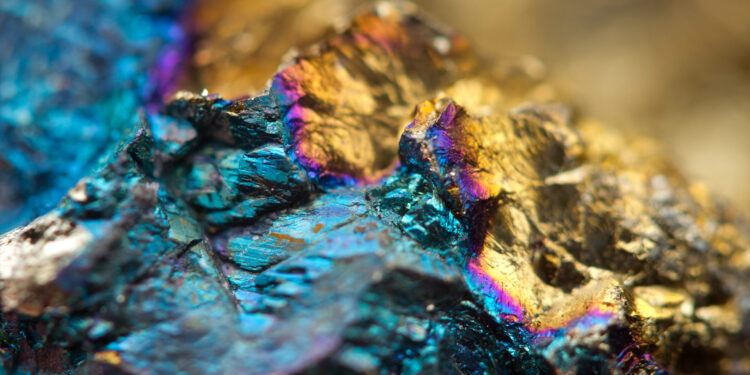Si6 Metals Limited (ASX: Si6) has encountered multiple fractionated, potentially fertile intrusives from the reconnaissance aircore (AC) geochemical drilling programme undertaken across its 100%-owned Monument Gold Project (MGP) located in the Laverton Tectonic Zone (LTZ), Eastern Goldfields, Western Australia.
The MGP is located near six +2Moz gold deposits within a 75km radius, including the Granny Smith (~3Moz), Wallaby (~7Moz) and Sunrise Dam (10Moz) gold deposits.
Recent and nearby discoveries by Dacian Gold Ltd include Jupiter (~1.5Moz), Westralia (>2Moz) and Cameron Well (0.25Moz).
“We are highly encouraged by the results of the AC drilling programme which successfully proved the presence of 18 potentially fertile gold intrusives among our 26 targets that are spread over a 30km strike at the Monument Gold Project,” Executive Chairman, Patrick Holywell, said.
“These intrusive targets are highly prospective for gold in a Western Australian region which is well known for giant, intrusive-related gold discoveries. The Korong intrusive associated with rocks of the sanukitoid suite makes me quite excited as we know De Grey Mining has a similar suite up in the Pilbara and most people know how that played out!
“The results from this drilling also give the Company confidence as we approach the upcoming Phase 2 AC drilling programme which is scheduled to begin end of April. Phase 2 is set to target the high priority targets that we have identified from the significant number of early and advanced stage intrusive prospects that we have now confirmed exist over the length of the Project.”
Programme Details
During 2021, Si6 announced it had been successful in its application for co-funded exploration drilling through the Western Australian Department of Mines, Industry, Regulation and Safety (DMIRS) Exploration Incentive Scheme (EIS) program where a 50% refund of direct drilling costs are awarded for innovative drilling projects such as this latest drilling campaign.
Towards the end of 2021, Si6 commenced the first phase of AC drilling at Monument targeting intrusion related gold deposits. This followed on from reverse circulation drilling at the Korong and Waihi banded iron formation hosted mineral deposits where a 154koz inferred gold resource has been declared, along strike from Dacian Gold.
Phase 1 drilling aimed to map out the distribution of intrusive targets and identify those prospective for bulk tonnage gold mineralisation based on their multi-element geochemical signature. The programme tested 26 out of 60 high-level targets comprising 126 holes for 4,198m.
Drill samples were submitted for gold and multi-element assay analysis, with the end of hole, fresh rock samples analysed for whole rock geochemistry to characterise rock type. Spectral analysis to identify styles of alteration associated with intrusion related gold mineralisation were also requested.
Targets identifying as fertile intrusives will be tested in the next round of aircore drilling (Phase 2). Phase 2 drilling is scheduled for the end of April and will prioritise prospective intrusive targets in addition to systematically testing the large number of regional, structural targets which are obscured by transported cover and which have seen little to no exploration to date.
Analysis and interpretation
Detailed interpretation of end of hole drill samples was undertaken using ioGAS software, an exploratory software tool specifically designed for mineral exploration.
The software utilises mineral and elemental abundances to classify rock suites by comparing to known data sets which occur within ioGAS. To classify rock type in ioGAS based on elemental abundances, a 1m end of hole sample comprising near fresh rock was collected and submitted to ALS laboratories for low-level gold assay and a four acid digest to completely dissolve all minerals.
The analytical results were then loaded into ioGAS and elemental compositions and ratios plotted, analysed and compared to determine overall rock types.
Low-level gold analyses consisted of aqua regia digest and fire assaying for end of hole samples with an ICP finish.
Although the drilling did not specifically target gold mineralisation, a number of anomalous gold intercepts were encountered such as at Two Bills in the north of the project, Korong, McKenzie Well and Aermotor Well in the south, including 4m at 1.38g/t Au from surface (MOAC118), 4m at 0.44g/t Au from 36m (MAOC064) and 4m at 0.19g/t Au from 20m (MOAC118).
The principal intrusive rock types identified from the study include granite, granodiorite, diorite and quartz-feldspar porphyry (felsic volcanic) with 64 out of the 126 holes drilled classed as felsic intrusives. The intrusives are spread over a 30km strike spanning the entire project and occur in 18 out of 26 of the targets drill tested.
The identified intrusives are analogous to those that host the Jupiter (1.5Moz) and Cameron Well (0.25Moz) deposits located in the neighbouring 2Moz Mt Morgans Gold Project owned by Dacian Gold.
Two of the larger, outcropping felsic intrusive bodies, which are located in the southeast corner of the project area, have known resources nearby, including Korong (3Mt @ 1.4g/t Au for 139koz inferred) located west of the Korong felsic intrusive and Dacian Gold’s McKenzie Well (0.95Mt @ 1.10g/t Au for 34koz inferred) located east of the McKenzie Well granite. Coincidently, both mineral deposits contain late-stage felsic intrusives within and are proximal to the mineralised zones.
For further information please visit: https://www.si6metals.com/












